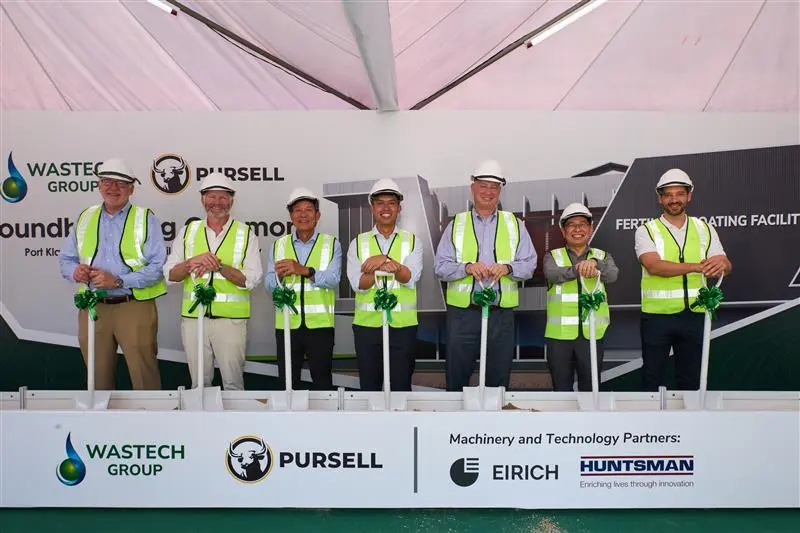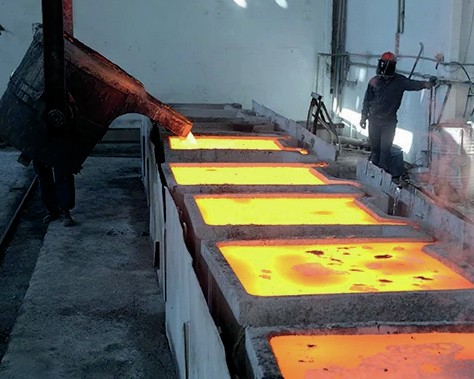Sulphur 412 May-Jun 2024
31 May 2024
Sulphur Industry News Roundup
Sulphur Industry News
WORLD
Red Sea, Panama cause freight rate hikes
Over the last six months, climate and geopolitical events have disrupted seaborne trade. A record drought in Panama and the unprecedented intensity of attacks on commercial ships by the Houthi rebels in the Red Sea are straining the freight market. Almost 150 ships have been targeted along the latter trade route since the first attack was registered to a non-commercial ship last year.
While vessels in the Panama Canal need to wait for longer to cross it, oil and shipping majors have stopped their vessels from crossing along the Red Sea; and are routing them away from the region. The alternative journey around the Cape of Good Hope in Southern Africa adds around 8.5 days to the journey from East Asia to Europe.
As a result, ship transits through the Panama Canal, Bab el-Mandeb Strait and Suez Canal are falling rapidly, with daily crossings reducing by almost 30%, 65% and 45% from year to date, respectively. With vessel transit along the Panama and Red Sea trade routes amounting to almost 20% of seaborne trade, recent events are already impacting transit volumes and freight costs. The Baltic Dry Index (BDI) has risen more than 30% in March since the Houthi attacks to commercial ships began in November, while the corresponding increase for the Global Container Freight (FBX) has been 143% so far.
As seaborne trade accounts for more than 80% of total global trade, these disruptions have potentially important spillovers to the world economy. In particular, trade in the Red Sea accounts for around 15% of global seaborne trade, and is important for oil and gas, dry bulk and container shipping.
CRU’s view is that the nature of current disruptions to the seaborne market is short-term, and trade fundamentals will shape the long-term direction of freight rates. World volume trade growth remains weak and has shown signs of stagnation over the last 12 months. As the weather outlook begins to improve in Panama, subdued trade is expected to weigh down on freight rates. For instance, the Panama Canal Authority has recently softened the restrictions on the number of ships that can cross the Canal, starting in January. Although the BDI fell briefly in January back to October levels, it is trending up again as more bulk carriers have been targeted by the Houthi rebels in the Red Sea.
The situation in the Red Sea remains fluid, but any de-escalation will likely see dry bulk freight rates dropping further and container costs limiting upside movements. However, in a severe downside scenario, we do not rule out renewed pressure on freight rates if the conflict in the Red Sea extends or escalates, leading to higher security risks for shipping majors. An intensification of the Red Sea conflict will result in higher container, dry bulk freight rates and could ultimately lead to higher energy prices.
The global supply chain crisis of 2021-22 saw freight rates soar and queues of ships form offshore major ports. This contributed to the surge in producer prices and consumer price inflation in the US, Europe and other countries. The Global Supply Chain Pressure Index (GSCPI) estimated by the Fed has shown a strong correlation with global PPI inflation over the past few years. Renewed disruptions to supply chains and/or higher energy prices could again cause producer prices to rise which will, in turn, put upward pressure on consumer prices, squeezing consumer real incomes and potentially delaying any easing in monetary policy. This threat is probably greatest for Europe, given the importance of the Red Sea route to West-bound container traffic from East Asia. But higher energy prices would affect most countries. However, a return to the inflation rates of 2021-22 is unlikely in all but a worse-case scenario. n
INDIA
Investigation into insoluble sulphur imports
The Indian government has launched an antidumping investigation into imports of insoluble sulphur originating in or exported from China and Japan from April 1st 2020 to the end of December 2023. The probe follows a petition by Oriental Carbon and Chemicals Ltd, alleging dumping of the product from the two countries, the directorate general of trade remedies (DGTR) of the Indian commerce ministry said.
In a statement DGTR said: “The applicant has provided prima facie evidence with respect to injury suffered by the domestic industry because of the dumped imports… The volume of the subject imports from the two countries has increased in both absolute and relevant terms… price depression caused by the dumped imports has been preventing domestic industry from increasing its prices to recover the full cost and achieve rate of returns.”
Insoluble sulphur is a polymeric form of sulphur which is insoluble in carbon disulphide, and is generally used as a vulcanisation agent in rubber applications, to improve quality, wearability and resistance to fatigue and ageing. Interested parties have 30 days to submit information relating to the investigation.
NETHERLANDS
New venture to decarbonise aviation fuels
Sasol and Topsoe have announced the launch of their joint venture, Zaffra. Based in Amsterdam, the Netherlands, Zaffra is will focus on the development and delivery of Sustainable Aviation Fuel (SAF).
Under the leadership of Jan Toschka, the appointed CEO of Zaffra, the company hopes to make significant contributions to reducing carbon emissions in the aviation industry, by combining Sasol’s experience in asset development, plant construction, and robust operating and technology expertise with Topsoe’s carbon emission reduction technologies.
Jan Toschka remarked: “Leading Zaffra in this crucial mission is my privilege. The growing demand for SAF will require multiple pathways and Zaffra is in a unique position to become a relevant player in this market. Backed by Sasol and Topsoe’s legacies, our offer combines leading technologies with decades of experience in building and running production assets. We recognise the differences in each opportunity. That’s why I am convinced there is tremendous growth potential for Zaffra, being agile and creative, whilst recognising it is essential to form partnerships and to collaborate with all stakeholders.”
Roeland Baan, CEO of Topsoe, added: “We’re very pleased to reach this important milestone with our joint venture with Sasol. With aviation being responsible for 2-3% of global carbon emissions, Zaffra will create significant value for the aviation industry and society by bringing alternative fuels to the market that can help reduce these emissions.”
SAUDI ARABIA
Aramco awards Fadhili gas plant expansion contracts
Aramco has awarded engineering, procurement and construction (EPC) contracts worth $7.7 billion for a major expansion of its Fadhili Gas Plant in the Eastern Province of Saudi Arabia. The project is expected to increase the plant’s processing capacity from 2.5 to up to 4 billion scf/d. This additional 1.5 billion scf/d of processing capacity is expected to contribute to the company’s strategy to raise gas production by more than 60% by 2030, compared to 2021 levels. The Fadhili Gas Plant expansion, which is expected to be completed by November 2027, is also expected to add an additional 2,300 t/d to sulphur production.
Wail Al Jaafari, Aramco Executive Vice President of Technical Services, said: “The award of these contracts reflects Aramco’s goal to increase supplies of natural gas, help efforts to reduce greenhouse gas emissions, and free up more crude oil for value-added refining and export. Together with leading international companies, we are advancing our goal to increase gas production. The expansion also supports our ambitions to develop a lower-carbon hydrogen business, while associated liquids from gas are an important feedstock for the petrochemical industry.”
The Fadhili gas processing complex, 30 km southwest of the Khursaniyah gas plant, was commissioned in early 2020 and currently has the capacity to process 2.5 billion scf/d of natural gas. It processes sour gas from the offshore Khursaniyah oil field and the offshore Hasbah non-associated gas field.
CHINA
West Sichuan gas field begins operations
China Petroleum & Chemical Corporation (Sinopec) has announced that the West Sichuan gas field has begun operations. The new gas field, with an annual output of 2 billion cubic meters of natural gas and 130,000 t/a of sulphur, will supply gas for southwestern China and regions along the Sichuan-East pipeline.
The West Sichuan Gas Field, designed and built by Sinopec, features integrated gas extraction and desulphurisation processes, ensuring closed-loop desulphurisation and efficient green production. The gas field boasts natural gas sulphur recovery rates of over 99.9% and produces gas that meets national standards while ensuring zero wastewater discharge. Additionally, it implements smart technology to enhance safety, risk control, and operation management, reducing carbon emissions.
CANADA
Study tracks sulpholane presence in ground water
A study by the Universities of Guelph and have identified ‘plumes’ sulpholane contamination of ground water, particularly in Alberta. Sulpholane is used to remove hydrogen sulphide from sour gas at sites across Alberta. According to a 2008 report by WorleyParsons Komex for Shell Energy Canada, sulpholane was first detected in groundwater in the 1980s and, in 1994, a monitoring program was put in place. A regional sulfolane monitoring program, which began in 1998, detected sulpholane in off-site groundwater near Shell’s Water-ton facility. By 2007, Shell began actively working to remove sulpholane, building on a pilot project conducted in 2003 and 2004.
Dr. Erica Pensini, associate professor at Guelph’s school of engineering, says researchers are tracking how it is spreading in groundwater, work that could help identify risks to supplies of potable water. She says the study suggests that naturally-occurring sulphates react with sulpholane in groundwater and its ability to “mix more thoroughly with water.” Research into whether or not it poses a risk to human health is still ongoing, Pensini says, but some companies have already raised concerns. Shell Canada says it is aware of Pensini’s research and has been working with the University of Guelph since 2022.
IRAQ
Baker Hughes to collaborate on sour gas flaring reduction
Baker Hughes has signed a memorandum of understanding (MoU) with Iraq’s Halfaya Gas Company (HGC) to collaborate on a gas flaring reduction project at the Bin Umar gas processing plant in southeastern Iraq. The MoU signing took place in Washington, DC, in the presence of Mohammed Shia’ Al Sudani, prime minister of Iraq, during the his official visit to the United States to strengthen bilateral ties and facilitate new private sector initiatives, including enhancing the resilience and sustainability of Iraq’s energy ecosystem.
Baker Hughes and HGC will leverage Baker Hughes’ technology and experience in developing and implementing deflaring solutions, including the supply of critical turbomachinery and process equipment, a pre-front end engineering and design (FEED) study of modular gas processing skids, and supporting the project’s selected FEED contractor in developing the plant design.
HGC is a special purpose company, owned by Raban Al Safina for Energy Projects (RASEP), established to deliver a new gas processing plant to serve the onshore Bin Umar field. In late 2023, the Iraq Ministry of Oil awarded a build-ownoperate-transfer contract to HGC. The field produces 40,000 bbl/d of oil and over 150 million scf/d of associated sour gas, currently flared or used untreated as a fuel gas for a nearby power plant. HGC’s Bin Umar gas plant will convert waste gas into treated dry gas, Liquefied Petroleum Gas (LPG) and condensate for domestic use and export.
KAZAKHSATAN
Kazakhstan increases its claims over Kashagan
Kazakhstan has laid additional claims against the international companies operating the Kashagan oil field. The North Caspian Operating Co., the joint venture overseeing the project, is a consortium of major international companies including Eni SpA, Shell Plc, Exxon Mobil Corp., and TotalEnergies SE. Kazakhstan’s government was already involved in a $15 billion suit over production costs at the field, which has endured a number of cost overruns, delays and operating issues, but has now added another reported $138 billion claim for lost revenue, calculated by multiplying oil production lost due to delays by current prices.
Discovered in 2000, Kashagan contain between 9 – 13 billion barrels of recoverable oil, according to NCOC, but associated gas is highly sour and must be treated at an onshore processing plant. Coupled with the harsh operating environment, the project has been a technically difficult one. Kashagan currently produces around 400,000 bbl/d of oil, against an originally envisaged output of 1.5 million bbl/d, which may explain where some of the Kazakh numbers of come from.





